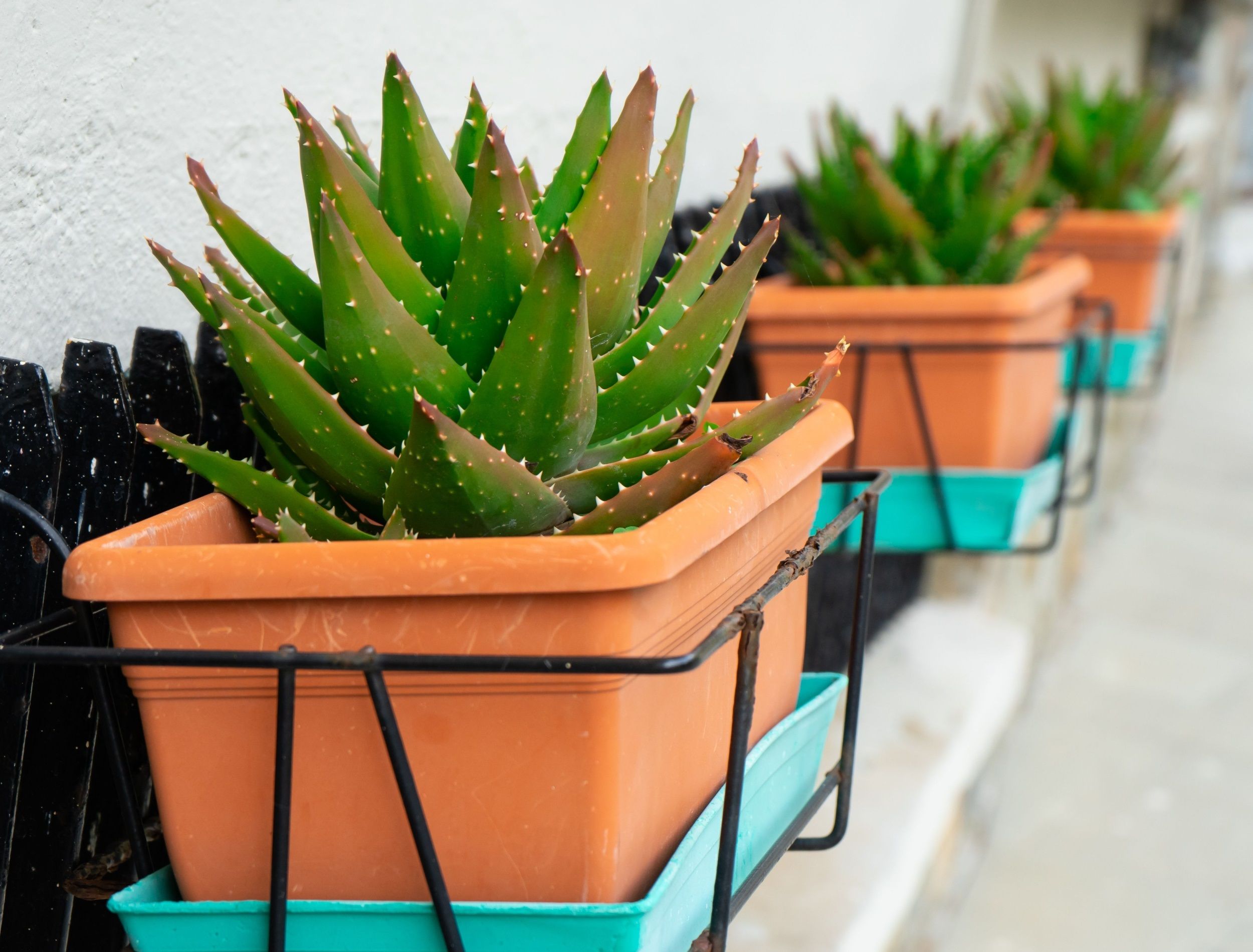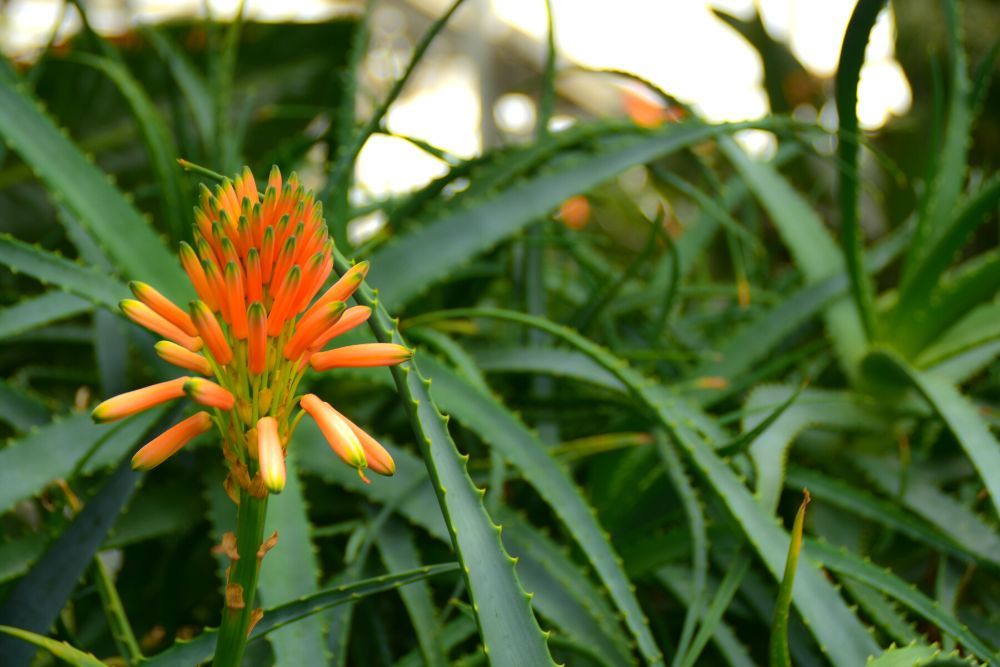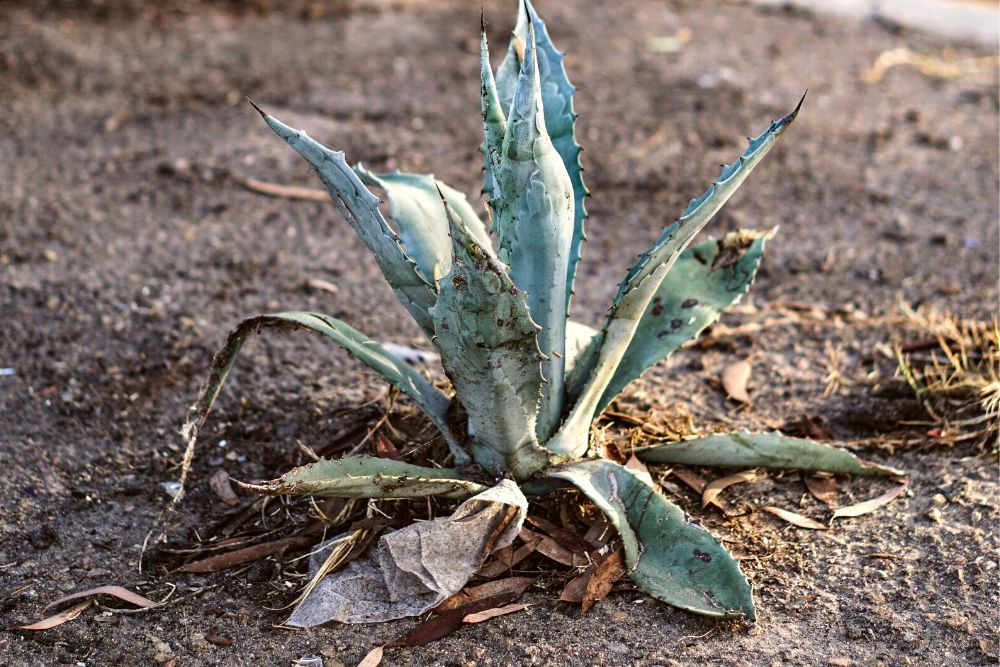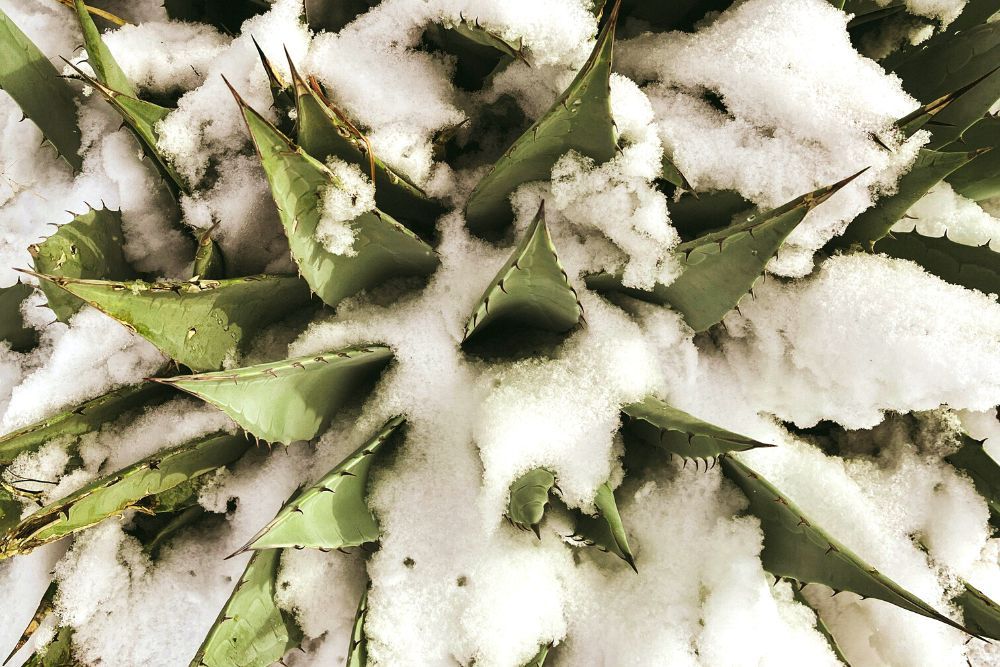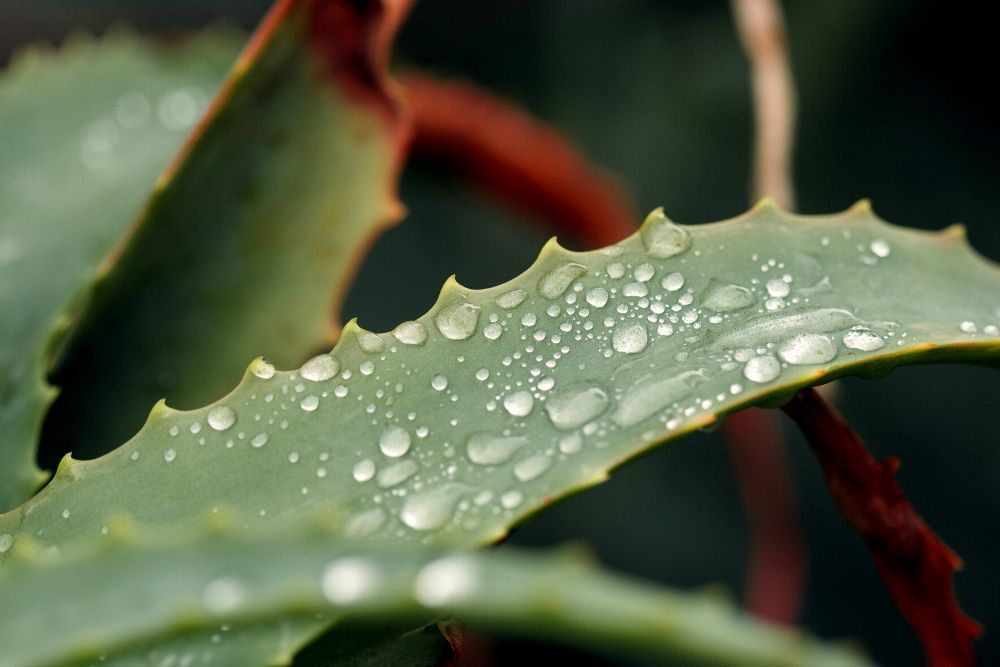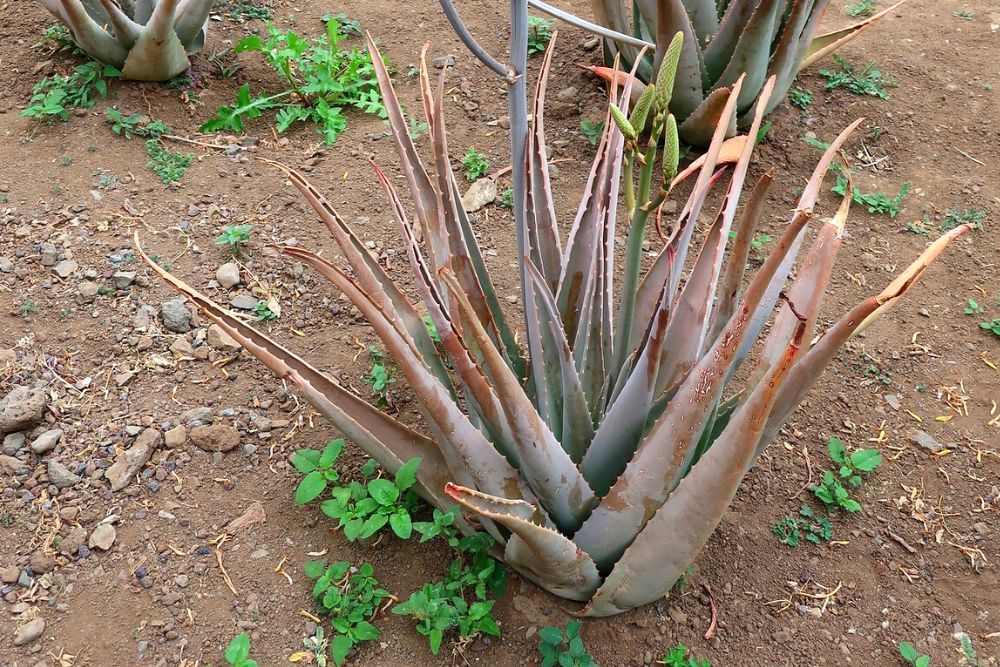The aloe plant is part of the succulent family and can be easily recognized by its long, green, and fleshy leaves. It’s a favored houseplant because it brings a beautiful pop of color to living spaces and it’s easy to care for.
However, if you notice your aloe plant turning brown, this is a vital sign it’s in need of some extra care. Continue reading to learn why this might be happening and what you can do to bring your aloe plant back to great health!
About the Aloe
Image credits: Bloor4Ik via Canva
Aloe plants are native to the hot and dry climates of Africa. These hardy and drought-resistant cacti can grow up to two feet in height. They can be kept indoors year-round or live in your outdoor space if you are located in a warmer region (hardiness zones 10 and 11).
Once mature, aloe plants are also known to flower in late winter or early spring! When they bloom, a tall, clustered flower spike, known as an inflorescence develops. This flower spike grows dozens of pink or yellow tube-shaped blossoms. You can support your aloe’s potential to flower by ensuring it has enough direct sunlight, not overwatering it, and exposing it to slightly cooler temperatures during the winter. Although, despite your best efforts, don't be surprised if your aloe houseplant doesn't bloom -- It's a rare flower to have in your collection.
These cacti are popular for the thick nutrient-dense gel that fills their leaves, which is often used to treat minor cuts and burns. This makes them equally useful as they are attractive! Just be sure your pets don’t get too close to this plant as it can be toxic to your furry friends.
Why Your Aloe Plant is Turning Brown
The most common variety of aloe plant found in homes across the country is the aloe vera, known for its deep green color. There are also other hybrid varieties such as ‘Pink Blush,’ and ‘Bright Star,’ that come with red or pale pink spots.
However, if you’re finding that sections of your aloe leaves are completely changing color and becoming dark red, yellow, or even brown, your plant is showing you a direct sign of stress! Below are four reasons why this might be happening and what to do about it.
1. Too Much Sunlight
Image credits: Anna Guerrero via Pexels
If your aloe plant is turning a dark color, it’s likely using a natural defense mechanism to protect itself from too much sun. More specifically, it begins to release a pigment called Anthocyanin, which darkens the plant to shield it from UV (solar) radiation.
If your plant stays in this stressed state for weeks on end, it can cause permanent damage to its health. However, if you catch it early enough, this is luckily reversible. Once the plant experiences less direct sun over a few days, it will return to its normal chlorophyll balance, turning green. This will help the plant optimize photosynthesis.
Though these plants need direct sunlight, it’s best that they are exposed to it intermittently. Whether your plant lives in a pot or in the ground, it’s best for it to be in a location that receives partial shade throughout the day. This will help protect it from the most intensive hours of daylight.
2. Cold Temperatures
Image credits: Atlas DeBorde via Pexels
Aloe plants do best in temperatures between 55 to 80 degrees Fahrenheit. Anything colder than this will put your plant into cold shock. When this happens, aloes release a yellow-brown compound known as Aloin, hence why the plant changes color.
The colder the temperature is, the higher the Aloin content will be, and the more damage your plant will experience. In severe situations, if your plant has been exposed to cold temperatures or even a light frost for a few days, this will kill sections of your plant, if not the whole thing.
So, if you’ve been keeping your plant outdoors but cooler nights are approaching, it’s a good idea to bring it back inside. Alternatively, if you live in a climate that tends to have cooler seasons, it’s best to just keep your plant in a pot year-round versus in the ground.
3. Over or Underwatering
Image credits: Griffin Wooldridge via Pexels
An improper watering schedule can also be a reason your aloe is turning brown. Lack of water will cause your aloe leaves to become dehydrated. This means they will likely start curling, or wrinkling, and become darker. They do this as a means to preserve any water content left within them. Instead of pouring energy into its luscious green leaves, all of it goes into simply keeping itself alive. As a result, maintaining its green color and chlorophyll levels are no longer a priority. If you’re overwatering on the other hand, it could lead your plant to turn brown as it begins to rot.
In both of these scenarios, it’s a good idea to reassess your watering schedule and your potting situation. If your leaves are curling up from dehydration, give your aloe an extra drink every one to two weeks. If you’ve been overwatering your plant and it’s begun to rot, it’s best to repot your plant or move it to a new location if it’s in the ground. Make sure its new living environment has good drainage.
4. Disease
Image credits: Leonid Radashkovsky via Pixabay
Certain fungal diseases can also cause your Aloe plant to turn brown. There are three common ones to keep an eye out for.
- Aloe Rust: This fungal infection often comes about from high levels of humidity and cool temperatures. It can be recognized as yellow spots on leaves, which over time can turn brown and become larger. Leaves may also start drooping as this disease takes over. There is no direct treatment, so your plant will likely start self-regulating to help cure itself.
- Anthracnose Disease: This disease is caused by excessive exposure to moisture and heat. It starts as green, wet legions on plant leaves and develops into light brown colored spots. Over time, the spots can merge together and kill entire sections of your Aloe. Fungicides will be useful to help treat your plant.
- Stem Rot: If your Aloe has too much moisture either from overwatering or humidity, it can begin to rot. Brown is the default color that plants will usually turn when they start decomposing into organic matter. In addition to the color change, leaves will also soften and turn mushy as this happens. You can help your plant stay alive by cutting away these rotting leaves.
Bring Your Aloe Back To Life
If your aloe plant is turning brown, it’s giving you a warning sign that it needs some extra care. Though these plants are generally resilient, they can negatively respond to certain environmental changes. Too much direct sunlight, cold temperatures, improper watering, and disease are the four main reasons your plant may be changing color. Luckily, if you catch these signs early enough, their effects can be reversed!
Have you experienced your aloe turning brown? What steps did you take to help it recover? Share your stories below!

